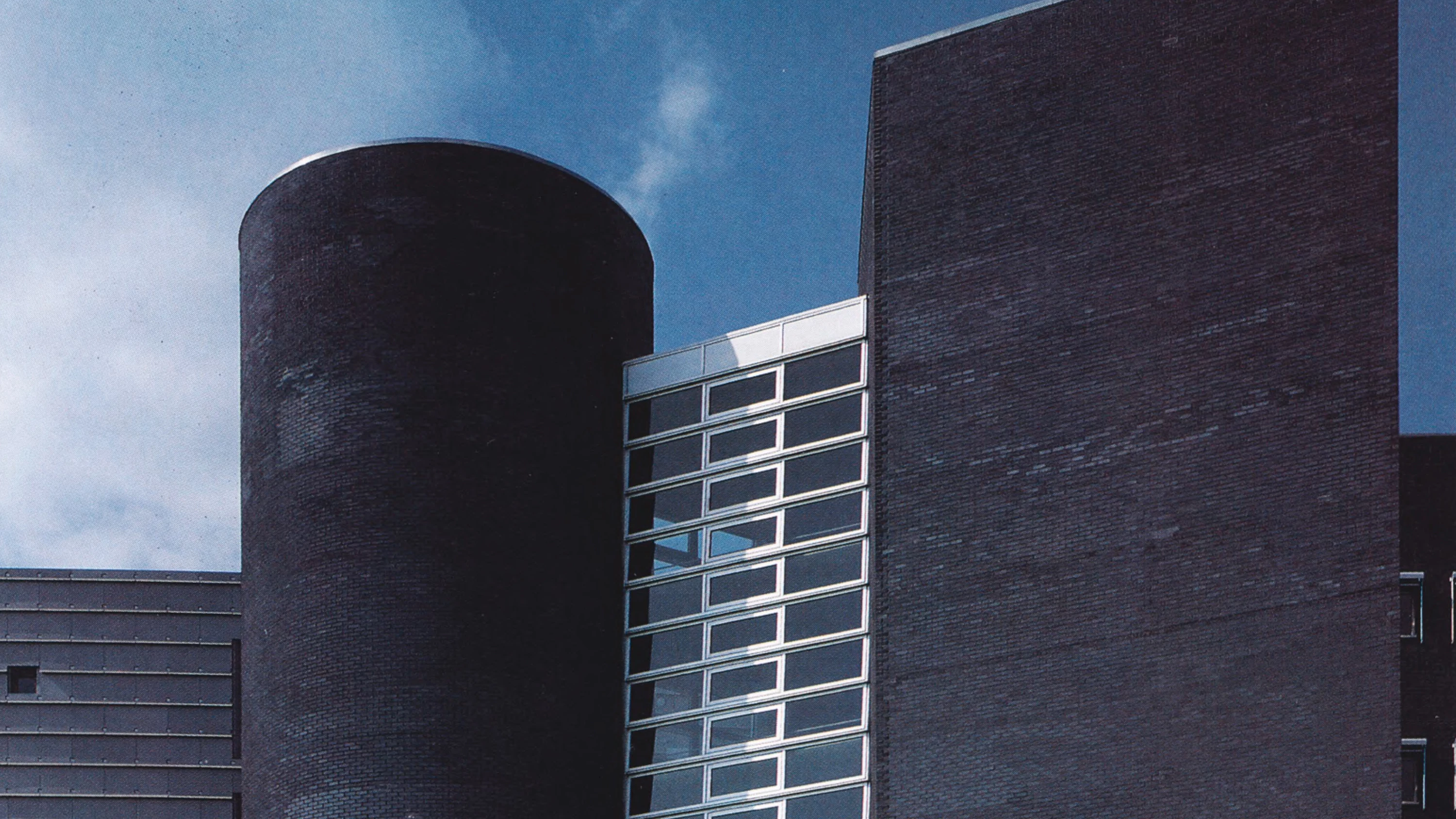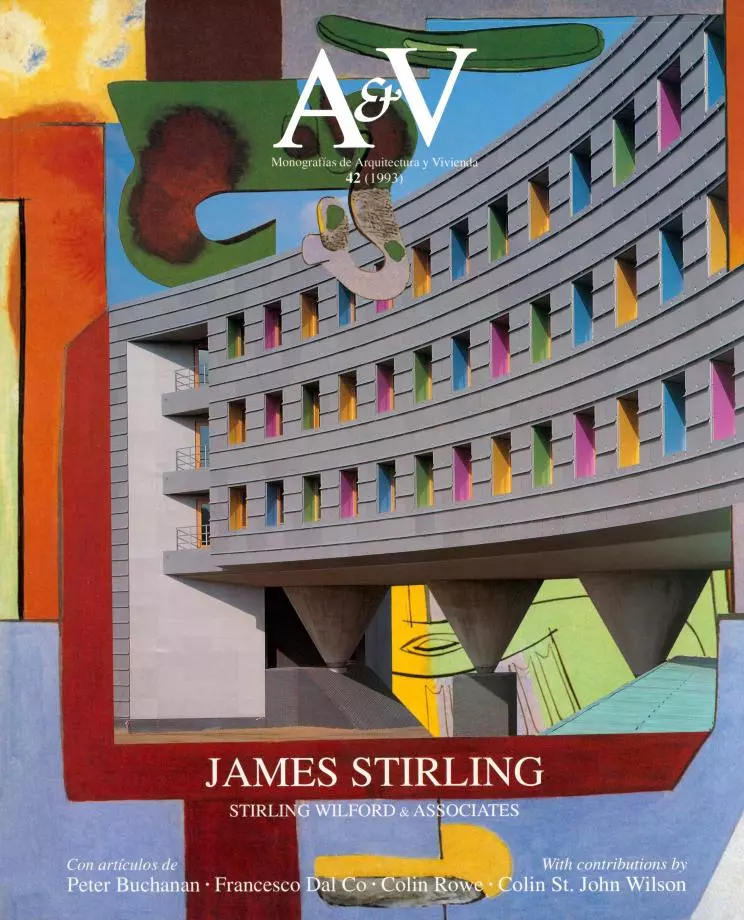The Knight’s Move
Irony and Melancholy in Stirling’s Work

Stirling’s projects often demand continuous and vigilant attention: they must be interpreted in the framework of the complex conceptual game he sought to propose, based on a radical revision of modem language and on a comparison with forms of expression representative of the past. Francesco Dal Co offers some clues to an in-depth understanding of his work, centering around the oblique citatory mechanism which the architect used so freely and unconventionally as to end up diffusing the references and turning them into mere allusions or evocations.
In 1956 an exhibition opened in London under the name “This is Tomorrow’’, a seemingly self-evident but actually ambiguous title if one considers what was being displayed on that occasion in the halls of the Whitechapel Gallery. Aside from James Stirling, among the protagonists of the event were several members of the Independent Group, along with John Vocckler, John McHale, Richard Hamilton, Nigel Henderson, Eduardo Paolozzi, and Alison and Peter Smithson, each committed in his own way to the activity being promoted by this heterodox formation constituted in the bosom of the Institute of Contemporary Arts. With Michael Paine and Richard Matthews, Stirling exhibited a papier-maché derived from the idea of a cluster of soap bubbles. The sculpture was an ironic representation of a primitive habitat and a faithful expression - as indeed the entire exhibition was - of the atmosphere that pervaded the sharpest artistic-intellectual circles of London during the late Fifties…[+]






